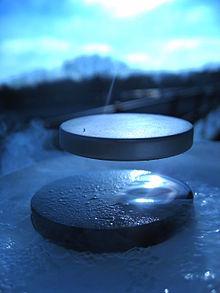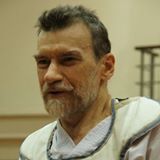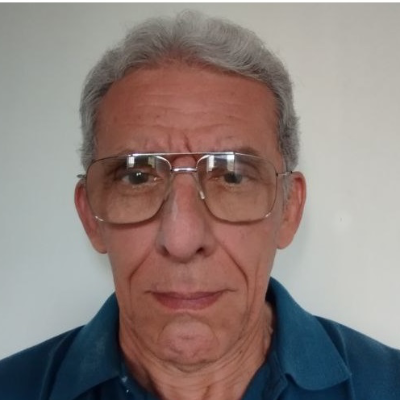Electricity and Magnetism
Homework Help & Tutoring
We offer an array of different online Electricity and Magnetism tutors, all of whom are advanced in their fields and highly qualified to instruct you.
Electricity and Magnetism
Superconductivity
Introduction
Imagine being able to ride a bike forever down a perfect road without needing to move the pedals. No wind resistance, no friction, no traffic getting in your way. That is what electric conduction turns into in a superconducting material. While electrons normally hit atoms at some points, under certain conditions and in some very special compounds, they can just run through the lattice with no losses.
History
The phenomenom of perfect conduction was first reported by Dutch scientist Kamerlingh Onnes at the University of Leiden in the Netherlands in 1911.1 He managed to liquify Helium and could then freeze Mercury to only a few degrees Kelvin. At this temperature, current could be sent through a wire with no observed resistance.2 Onnes called this characteristic suprageleider, which was later translated into superconductor.3
A milestone in supeconductivity research came in 1933 with the discovery of the Meissner Effect. Two German researchers, Meissner and Ochsenfeld found that a superconducting compound will completely exclude magnetic fields, thus creating an upward force on a magnet called magnetic levitation.4

Figure 1. A superconductor levitating an external magnet.5
Why materials could behave this way when cooled was still unknown to science until the theory of Cooper pairs or the BCS theory were introduced by Bardeen, Cooper and Schrieffer in 1957.4 This is based on a rather complex quantum: coupling of two electrons with opposite momentum and spins.6
Due to the extreme costs accrued by cooling down to only a few degrees above absolute zero temperature, superconductivity remained a rather academic interest until the discovery of so called High Temperature Superconductors (HTS) in 1986 by two researchers at IT giant IBM.7 These special substances, most often compounds with Barium and/or Strontium, had a critical temperature up to 130 - 140 K. It should be noted that none of these materials occur naturally; they have to be manufactured using a special procedure.7
Recent years have seen another wave of discoveries of previously unknown superconductors, including a very recent revelation of of a special type of hydrogen sulfide capable of superconducting up to -70 degrees Centigrade.8
Research on superconducting materials and applications has yielded Nobel Prizes to Kamerlingh Onnes in 1913, Bardeen, Cooper and Schieffer in 1972, Bednorz and Müller in 1987, and physics prizes in 1962, 1973, 1978, 1996 and 2003 were also related to superconductivity in materials.9
Applications
The most obvious application of superconducting materials would be the perfect cable, running with no resistance in an eternal circuit. The costs of cooling has kept this to the prototype stage, seeing some installations in Denmark, the United States and Germany, but still not in use on a big scale. This might come into effect more as superconducting materials can be manufactured more cheaply and cooling costs be reduced.
Magnetic levitation is used to create “flying” trains, where the car rides on a bed of superconductors and thus is suspended a distance above the line all the time. This has been tested extensively in Japan, and a line is being planned for construction with a target date for its completion of 2027.
To fulfil our mission of educating students, our homework help center is standing by 24/7, ready to assist students who need study help with electricity and magnetism
References
- van Delft, D. and Kes, P.: The Discovery of Superconductivity. Physics Today, September 2010, pp. 38-43.
- Slichter, C.: Introduction to the History of Superconductivity. American Institute of Physics, https://www.aip.org/history/mod/superconductivity/01.html .
- Superconductivity entry at reference.com, http://dictionary.reference.com/browse/superconductor
- Dull, Robert W. A Teacher’s Guide to Superconductivity for High School Students - Historical Background. Oak Ridge National Laboratory, http://web.ornl.gov/info/reports/m/ornlm3063r1/pt2.html
- Magnetic Levitation – Wikipedia, the free Encyclopedia, https://en.wikipedia.org/wiki/Magnetic_levitation
- Timm, C.: Theory of Superconductivity. Technical University of Dresden, http://www.physik.tu-dresden.de/~timm/personal/teaching/thsup_w11/Theory_of_Superconductivity.pdf
- High-temperature Superconductivity - Wikipedia, the free Encyclopedia, https://en.wikipedia.org/wiki/High-temperature_superconductivity
- Choi, Charles Q.: New Temperature Record is Huge Achievement for Superconducting, Live Science, http://www.livescience.com/51877-superconductors-new-temperature-record.html
- Nobel Laureates in Superconductivity. IEEE Council on Superconductivity, http://ieeecsc.org/pages/nobel-laureates-superconductivity
To fulfill our tutoring mission of online education, our college homework help and online tutoring centers are standing by 24/7, ready to assist college students who need homework help with all aspects of electricity and magnetism. Our physics tutors can help with all your projects, large or small, and we challenge you to find better online electricity and magnetism tutoring anywhere.
College Electricity and Magnetism Homework Help
Since we have tutors in all Electricity and Magnetism related topics, we can provide a range of different services. Our online Electricity and Magnetism tutors will:
- Provide specific insight for homework assignments.
- Review broad conceptual ideas and chapters.
- Simplify complex topics into digestible pieces of information.
- Answer any Electricity and Magnetism related questions.
- Tailor instruction to fit your style of learning.
With these capabilities, our college Electricity and Magnetism tutors will give you the tools you need to gain a comprehensive knowledge of Electricity and Magnetism you can use in future courses.
24HourAnswers Online Electricity and Magnetism Tutors
Our tutors are just as dedicated to your success in class as you are, so they are available around the clock to assist you with questions, homework, exam preparation and any Electricity and Magnetism related assignments you need extra help completing.
In addition to gaining access to highly qualified tutors, you'll also strengthen your confidence level in the classroom when you work with us. This newfound confidence will allow you to apply your Electricity and Magnetism knowledge in future courses and keep your education progressing smoothly.
Because our college Electricity and Magnetism tutors are fully remote, seeking their help is easy. Rather than spend valuable time trying to find a local Electricity and Magnetism tutor you can trust, just call on our tutors whenever you need them without any conflicting schedules getting in the way.






